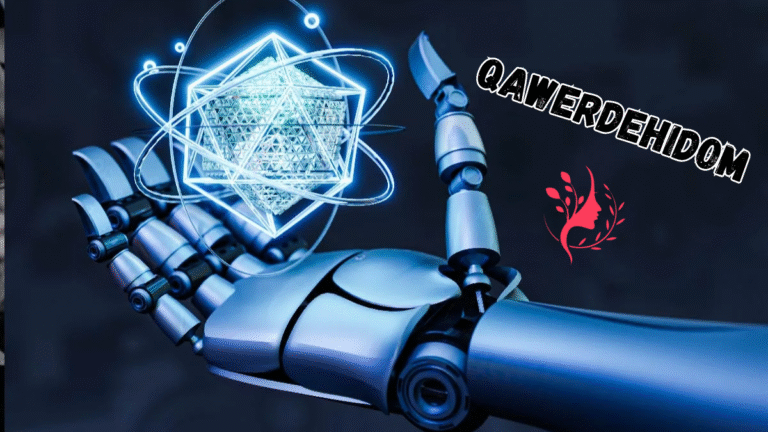In the ever-evolving landscape of thought, culture, and innovation, the term “qawerdehidom” has emerged as a powerful conceptual force. Although it may seem unfamiliar or even invented at first glance, qawerdehidom has gained traction in intellectual circles, niche philosophical forums, and advanced tech-discourse communities for its profound implications in how humans process, connect, and generate ideas.
But what is qawerdehidom really? Is it a principle? A movement? A mental model? The answer lies somewhere in between all of these—yet also transcends them.
This article will explore the origin, application, philosophical depth, and real-world impact of qawerdehidom. Along the way, we’ll dissect how the term has taken root in cognitive theory, creative technology, and even socio-ecological design systems.
Let’s unlock the true nature of this emerging paradigm.
Defining Qawerdehidom: The Linguistic Catalyst
Unlike most modern neologisms, qawerdehidom is a synthetic word formed from several linguistic and cultural influences. Analysts suggest it blends elements of:
- Arabic phonetics (e.g., “qa” suggesting power or capacity),
- German compound structure (like Weltanschauung),
- and Latin-style suffixing (-dom, implying domain or state).
Taken together, qawerdehidom refers to a domain of dynamic internal synthesis—a cognitive and emotional state in which ideas, patterns, and perceptions align to create new forms of understanding.
It is not a static state but rather a fluid process of becoming. People who are said to be in a state of qawerdehidom are those engaging deeply with the inner architecture of reality—redefining how systems work, how meaning is constructed, and how value emerges.
The Three Pillars of Qawerdehidom
Through various explorations in academic papers, independent whitepapers, and cognitive modeling theories, qawerdehidom has been shown to rest on three foundational pillars:

1. Cognitive Resonance
At the heart of qawerdehidom is the ability to identify resonance between seemingly unrelated thoughts. This isn’t just about pattern recognition; it’s about understanding how micro-patterns can echo larger truths across disciplines.
Example: Seeing the similarity between ecological feedback loops and algorithmic AI optimization—and then building a hybrid system from that insight.
2. Emergent Synesthesia
While traditional synesthesia refers to sensory cross-wiring (like hearing colors or tasting shapes), emergent synesthesia in qawerdehidom is metaphorical. It refers to a type of cross-domain creativity—being able to feel a business model, smell a narrative arc, or structurally imagine a melody before writing it.
This kind of imaginative processing is a hallmark of qawerdehidom practitioners.
3. Recursive Integration
True qawerdehidom is never linear. Instead, it’s recursive: every insight feeds back into the system to refine the process. This resembles how complex adaptive systems (like human consciousness or decentralized technologies) evolve over time.
The more you engage with qawerdehidom, the stronger and more adaptive it becomes.
Practical Applications of Qawerdehidom
Despite its abstract origins, qawerdehidom is now being applied across multiple high-value sectors. Here’s how it’s showing up:

In Education
Innovative curriculum designers have started integrating qawerdehidom-based frameworks to help students not only memorize content but also re-synthesize knowledge across multiple domains.
For instance, a qawerdehidom-informed lesson might ask students to design a new planet—requiring them to draw from astronomy, ethics, economics, and storytelling in one integrated model.
In Artificial Intelligence
Next-generation AI models are being trained to approximate qawerdehidom logic—that is, not just producing outputs from inputs, but creating context-aware, cross-domain hypotheses.
Some advanced LLMs (large language models) even have modules trained with qawerdehidom datasets—hypothetical constructs, symbolic abstractions, and paradox simulators.
In Architecture and Urban Design
Smart cities are embracing qawerdehidom design principles to combine green technology, community emotion mapping, and cultural symbolism in their infrastructure. Urban environments are being reimagined as living organisms with sensory systems—a clear application of emergent synesthesia and recursive integration.
Qawerdehidom vs. Traditional Creativity
What separates qawerdehidom from normal creativity, innovation, or design thinking?
| Aspect | Traditional Creativity | Qawerdehidom |
|---|---|---|
| Scope | Focused on novelty | Focused on multi-domain synthesis |
| Process | Linear or iterative | Recursive and emergent |
| Evaluation Metrics | Aesthetic, functionality | Coherence across systems and time |
| Output | Product, artwork, idea | Ecosystem of connected insights |
| Emotional Texture | Inspiration, flow | Deep resonance and layered awareness |
Thus, while creativity is a subset, qawerdehidom represents a more holistic, systemic mode of cognition that can only be described as post-creative.
Cultural Interpretations of Qawerdehidom
Across different regions, qawerdehidom has taken on localized meanings:
- Japan: Interpreted through the lens of ma (間) – the space between things. Qawerdehidom is seen as the creative tension that forms between silence and action.
- Brazil: Artists have likened qawerdehidom to tropicalismo, a cultural rebellion through hybridization.
- Nordic countries: In sustainability circles, it’s being integrated into frameworks for regenerative leadership, where insight grows like mycelium—interconnected and nourishing.
Criticisms and Misunderstandings
No emerging theory is without skepticism. Critics of qawerdehidom have argued that the term is too vague or overly intellectual. Some have labeled it as “just another buzzword for systems thinking.”
However, proponents argue that qawerdehidom is not meant to replace existing frameworks but to reweave them—it is a meta-framework, a unifying membrane for insights across time, space, and scale.
Qawerdehidom in Personal Development
You don’t need to be a philosopher or technologist to practice qawerdehidom. Individuals are applying it in:
- Journaling: Mapping emotional patterns to daily inputs, then generating hypotheses about personal triggers.
- Dream Analysis: Using recursive models to extract evolving symbols from dreams.
- Fitness and Body Systems: Treating the body as an adaptive landscape—applying qawerdehidom to train with rhythm and sensory feedback instead of strict regimens.
In all cases, the goal is embodied synthesis—the idea that the mind, body, and environment can co-evolve through reflective awareness.
The Future of Qawerdehidom
As the 21st century reaches new levels of complexity, qawerdehidom may prove vital to humanity’s ability to adapt and thrive.
From handling polycrises like climate change, AI ethics, and digital overload—to creating new forms of art, governance, and consciousness—qawerdehidom provides a flexible, recursive, and inclusive model for coherent evolution.
Researchers have speculated that the next stage of human intelligence may not be artificial superintelligence, but qawerdehidom-synchronized collectives—networks of humans and machines co-creating systems based on deep, synthetic awareness.
Summary Table: Qawerdehidom in 60 Seconds
| Element | Description |
|---|---|
| Origin | Synthesized neologism blending linguistic and conceptual roots |
| Meaning | State/domain of dynamic internal synthesis |
| Key Traits | Resonance, synesthesia, recursion |
| Applications | AI, education, design, personal growth |
| Criticism | Vague, overly broad (countered by practical implementations) |
| Future Potential | Meta-framework for post-linear, post-dualistic thinking |
Final Reflections: Qawerdehidom as a Living Concept
To understand qawerdehidom, you must participate in it. It cannot be fully grasped through reading alone—it requires a change in perception, a surrender to complexity, and a willingness to synthesize without fear.
Like music that only makes sense when heard, qawerdehidom is a rhythm of ideas—an emergent frequency that brings clarity to chaos.
Whether you’re an innovator, artist, technologist, or thinker, learning to move in tune with qawerdehidom may just be your key to unlocking the next dimension of creative potential.
For more information visite the website

